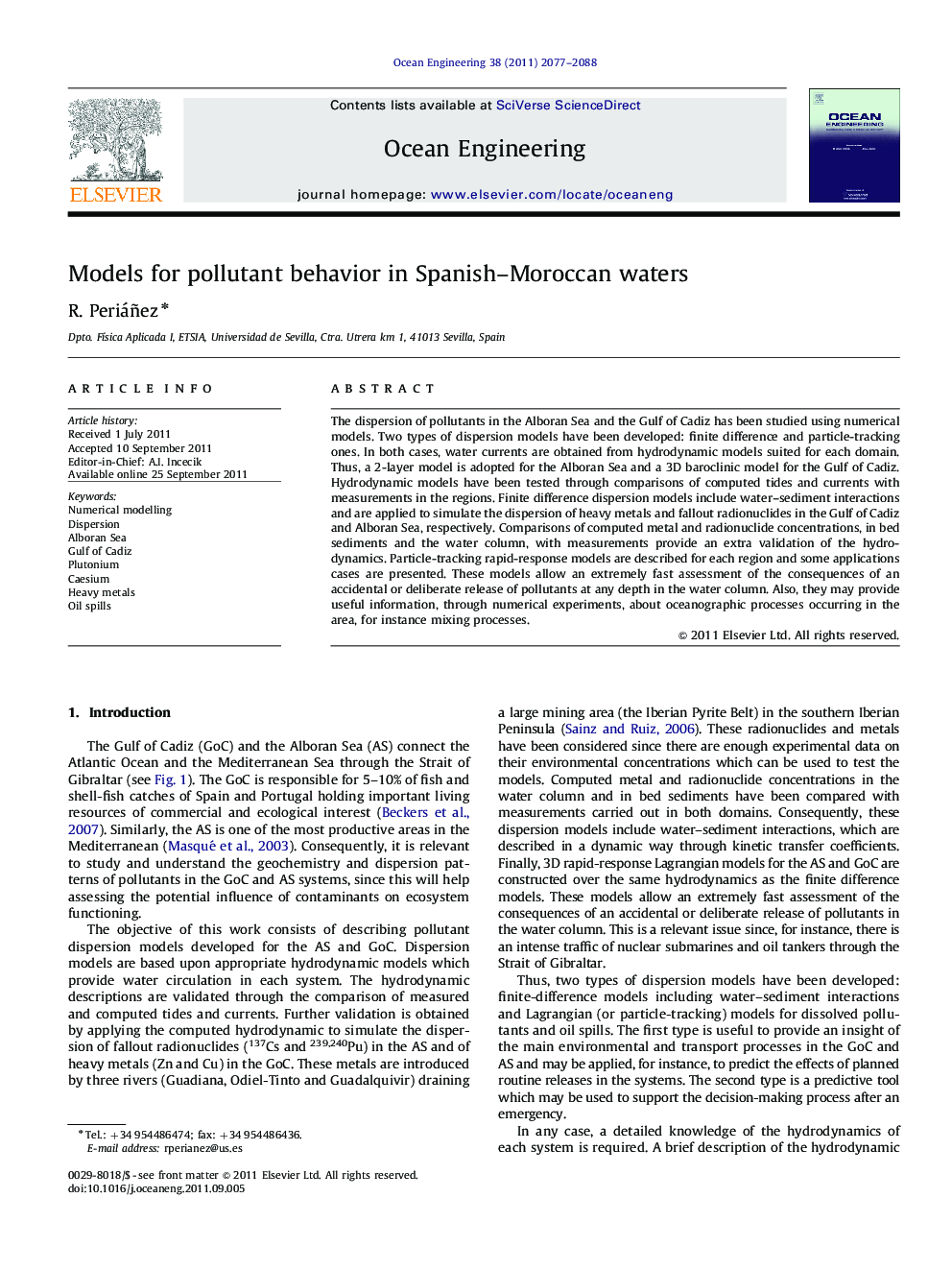| Article ID | Journal | Published Year | Pages | File Type |
|---|---|---|---|---|
| 1726371 | Ocean Engineering | 2011 | 12 Pages |
The dispersion of pollutants in the Alboran Sea and the Gulf of Cadiz has been studied using numerical models. Two types of dispersion models have been developed: finite difference and particle-tracking ones. In both cases, water currents are obtained from hydrodynamic models suited for each domain. Thus, a 2-layer model is adopted for the Alboran Sea and a 3D baroclinic model for the Gulf of Cadiz. Hydrodynamic models have been tested through comparisons of computed tides and currents with measurements in the regions. Finite difference dispersion models include water–sediment interactions and are applied to simulate the dispersion of heavy metals and fallout radionuclides in the Gulf of Cadiz and Alboran Sea, respectively. Comparisons of computed metal and radionuclide concentrations, in bed sediments and the water column, with measurements provide an extra validation of the hydrodynamics. Particle-tracking rapid-response models are described for each region and some applications cases are presented. These models allow an extremely fast assessment of the consequences of an accidental or deliberate release of pollutants at any depth in the water column. Also, they may provide useful information, through numerical experiments, about oceanographic processes occurring in the area, for instance mixing processes.
► Hydrodynamic simulated in two domains with appropriate models. ► Finite difference dispersion models compared with radionuclide/metal measurements. ► Particle-tracking dispersion models for dissolved contaminants and oil.
